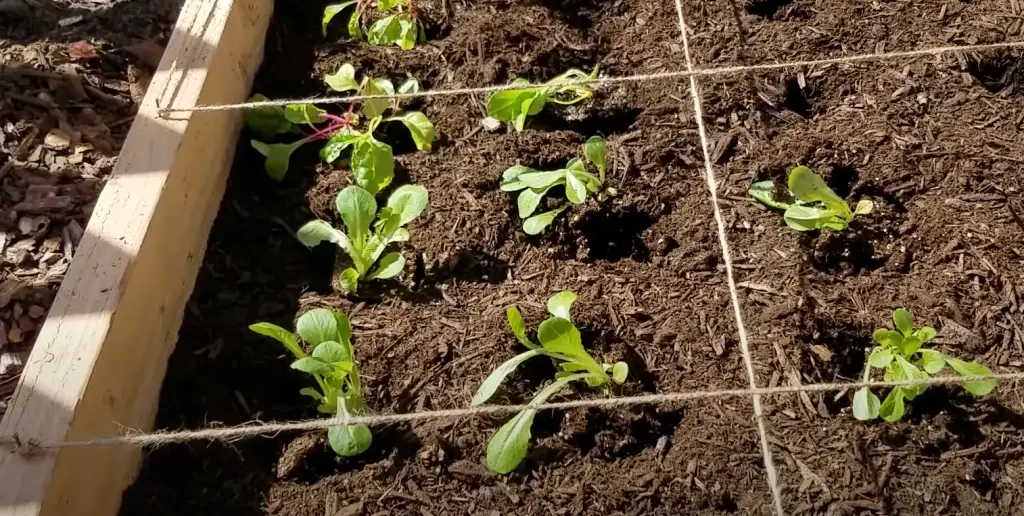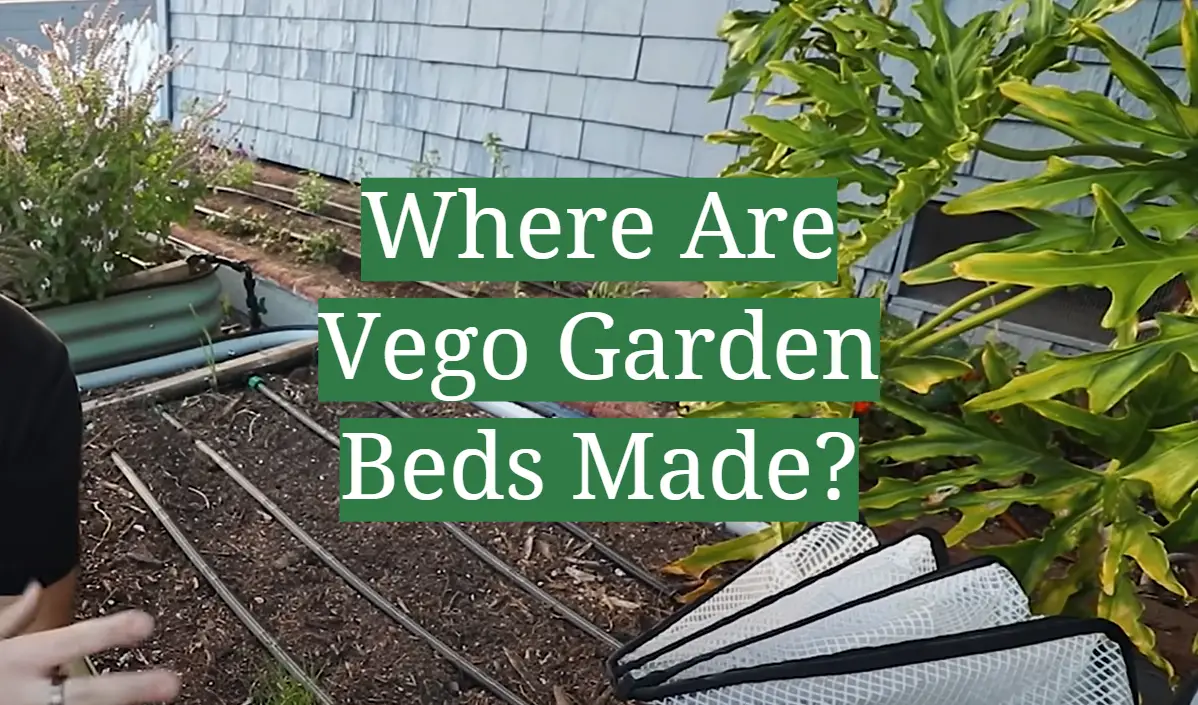The Vego Garden Bed is a unique product that many people are curious about. Some people want to know where they are made, while others are looking for tips on how to use them.
In this article, we will answer all of the most common questions that people have about the Vego Garden Bed. We will also provide some useful tips on how to get the most out of your garden bed!
Where Are Vego Garden Beds Made?
The Vego Garden Beds company is from Melbourne, Australia. It was started by two friends who loved gardening and wanted to make it easier for people to get into growing their own food. The beds are made in a small factory on the outskirts of the town.
The beds are made from galvanised steel and powder-coated for durability. They come in a range of colours, including black, green, and terracotta.
Vego Garden Beds are easy to put together. You don’t need any tools or experience. The modular system means you can add or remove sections to make a bed that is the perfect size for you. [2]
What are Vego Garden Metal Raised Beds made from?
The Vego Garden Bed is made of high-quality steel that will not corrode. The steel is also much thinner than other raised garden beds on the market, so it is easier to work with and less expensive to ship.
The thinness of the steel also allows for more heat to penetrate the soil, which is beneficial for root development. The steel is also highly recyclable, so it’s a great choice for those looking for an eco-friendly option.
Vego Garden Beds are also available in a variety of sizes and heights to suit any garden space. [1]
Is it Safe to Grow Fruit in Vego Raised Beds?
Yes, it is safe to grow fruit in Vego Garden Beds. They Are made of high-quality materials that are non-toxic and food-safe. They are also designed to drain well, so you won’t have to worry about waterlogged roots.
There are a few things you need to keep in mind when growing fruit in Vego Garden Beds.
- First, choose a bed that is the right size for the type of fruit you want to grow. Second, make sure to use the right soil mix.
- For most fruits, you’ll want a mix that is about 60% sand and 40% organic matter. This mix will provide good drainage while still holding enough moisture for the roots.
- Make sure to water your fruit regularly. Fruit trees need about an inch of water per week, so check the soil often and water as needed.
By following these simple tips, you can enjoy fresh, homegrown fruit without any problems.
Are Vego Raised Beds Safe for Children and the Elderly?
The Vego Garden Bed is made with pressure-treated wood that is safe for both children and the elderly. The bed is also surrounded by a fence to keep pets and wildlife out.
If you’re interested in growing your own vegetables, fruits, and herbs, Vego Garden Beds are a great option. They’re easy to assemble and can be placed in any backyard or patio. [1]
How do I Make Customised Sizes?
What is the Turnaround Time for a Custom Size?
The turnaround time for a custom size is about two weeks.

This may vary depending on the complexity of the design and how busy we are.
Can I Buy Extra Corner Pieces?
Yes, you can buy extra corner pieces for your Vego Garden Bed. You can find them online or at your local garden centre.
If you are looking to add more height to your garden bed, you can also purchase raised garden bed kits. These typically come with four sides and a bottom, so all you need to do is assemble them and fill them with soil.
Another way to add height to your garden bed is by building a wooden frame. This will give you more space to plant taller plants or vines.
Another thing to think about when choosing where to place your Vego Garden Bed is how much sun or shade it will get. If you live in an area with a lot of sun, you might want to place your garden bed in a spot that gets some afternoon shade. This will protect your plants from the hot summer sun and help them stay hydrated.
Difference between In-Ground and Raised Garden Beds
In-ground garden beds are the most common type. They are simply defined as any bed that is planted directly into the ground, without being elevated in any way. In-ground beds can be created using a variety of materials, including wood, stone, or metal.
Raised garden beds are another popular option for gardeners. They are elevated above ground level, and are typically built using wood or metal. The most common type of raised garden bed is a wooden frame filled with soil.

In-ground beds are cheaper and easier to build, but raised beds offer a lot of benefits. Raised beds are easier to take care of and they have good drainage and aeration for your plants. If you have the money and the space, raised garden beds are a great option for any gardener.
Benefits of Raised Garden Beds
One of the most popular reasons why people choose to use raised garden beds is because of the many benefits they offer. Some of these benefits include:
- Easier to maintain than traditional gardens
- Can be used in small spaces
- Better drainage and aeration for plant roots
- Reduced weed growth
- Improved plant health
- Better yields for crops
If you are looking for an easy way to improve your gardening game, then raised garden beds are a great option. Not only do they offer numerous benefits, but they are also relatively simple to set up and maintain. [1]
The Best Materials
There are three types of materials that Vego garden beds can be made from- wood, metal, or plastic. Wood is the most common material because it is strong and easy to work with.
Metal is a newer option that is becoming more popular because it lasts longer and doesn’t need much maintenance. Plastic is the least popular choice because it isn’t as strong as the other two materials, but it is the cheapest option.
If you want a raised bed that is easy to assemble and take apart, then metal or plastic might be good for you.
If you want a raised bed that is durable and low-maintenance, then metal might be better. And if you want an affordable raised bed, plastic might be the best option for you.
FAQ
Are Vego Garden Beds Worth it?
The short answer is yes! Vego garden beds are an excellent way to get started with gardening or to upgrade your current setup. They are made from high-quality materials and construction, which results in a long-lasting product that will provide years of use.
Additionally, they come in a variety of sizes and styles to suit any space or need, and they can be easily customised with accessories to create the perfect garden bed for your home.
What are Vego Garden Beds Made of?
The material that Vego garden beds are made of is high-density polyethylene (HDPE). This type of plastic is commonly used to make food containers because it is durable and does not absorb bacteria. HDPE is also recyclable, so it’s a good choice for your garden bed if you’re concerned about the environment.
How Long Do Vego Raised Beds Last?
On average, a Vego raised bed will last around 15 years. This number will differ depending on the climate and how often you use your raised bed. If you live in an area with harsh winters, your Vego raised bed may not last as long.
Conversely, if you take good care of the bed and don’t use it as often, it could last much longer.
How Much Soil Does a Vego Garden Need?
To grow most vegetables, your Vego garden bed needs at least 18 inches (46 cm) of soil. For root crops like potatoes, carrots, and beets, you’ll need 24 inches (61 cm) of soil to reach their full potential. If you’re growing leafy greens or other shallow-rooted plants, you can get away with as little as 12 inches (30 cm) of soil.
The amount of soil you’ll need will also depend on the type of plants you’re growing. For example, if you’re planning on growing tomatoes, you’ll need to make sure your Vego garden bed has enough room for the roots to spread out. Tomatoes need at least 24 inches (61 cm) of soil to grow properly.
If you’re not sure how much soil your plants will need, it’s always better to err on the side of too much rather than too little. This way, you won’t have to worry about your plants getting enough food and water.
Are Galvanised Raised Garden Beds Safe?
Yes, galvanised raised garden beds are safe. However, it is important to note that they will rust over time. If you live in an area with high humidity or close to the ocean, your raised garden beds may rust faster than those in drier climates.
You can prevent rust by regularly coating your raised garden beds with a clear sealant.
Stainless steel raised garden beds are a rust-resistant option. Another option is to build your own raised garden beds out of untreated lumber. Be sure to use food-grade lumber if you plan on growing edible plants.
Which Garden Bed is Best?
This is a difficult question to answer as it depends on individual circumstances. In general, however, we recommend the following:
The Vego Compact is perfect for people who don’t have a lot of space. It is just one metre wide, but it can still be used to grow a variety of vegetables.
The Vego Classic is our most popular model. It is two metres wide and provides a lot of space to grow a variety or quantity of vegetables.
The Vego Grand is our biggest model. It is three metres wide and perfect for people who want to grow a lot of vegetables or flowers in their garden.
Where are Birdies Raised Beds Made?
You may be wondering where your birdies raised beds are made. The answer is simple: in a factory. However, the process of making these beds is anything but simple.
First, the lumber for the bed frame is cut to size and then sanded down to create a smooth surface. Next, the wood is stained or painted, depending on the desired look. After that, the frame is assembled and the legs are attached.
Once the frame is complete, it’s time to add the soil and plants. The soil is mixed with compost and other nutrients to create a healthy environment for the plants to grow. Once the bed is filled with soil, it’s time to plant the seeds or start.
Useful Video: 9 Beginner Raised Bed Garden Mistakes to Avoid
Conclusion
As you can see, there are a few different places where Vego Garden Beds can be made. Each has its own benefits and drawbacks, so it’s important to choose the right one for you.
Hopefully, this guide has helped you make a more informed decision about where to get your Vego Garden Bed. Thanks for reading!
References:
- https://vegogarden.com/apps/faq
- https://plantbasedonabudget.com/the-best-raised-garden-bed-why-i-chose-vego-garden/










Leave a Reply
View Comments